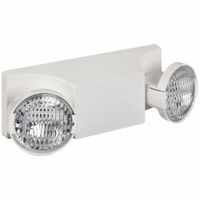- Home
- Lighting
- Emergency Exit Lighting
- Emergency Light Fixtures
Emergency Light Fixtures
Emergency light fixtures automatically switch on when power goes out and illuminate pathways toward exits. They can stay lit for at least 90 minutes to guide evacuations and allow first responders and maintenance staff to find their way when working within buildings during an outage. Also known as e .....Read More
Frequently Asked Questions
What are emergency light fixtures and how do they work?
How long do emergency lights stay on during a power outage?
What are the installation requirements for emergency lights?
How often should emergency lights be tested?
What is the difference between general purpose and wet location emergency lights?
How do you maintain and replace the batteries in emergency lights?
What are the local safety codes for emergency lighting installation?

